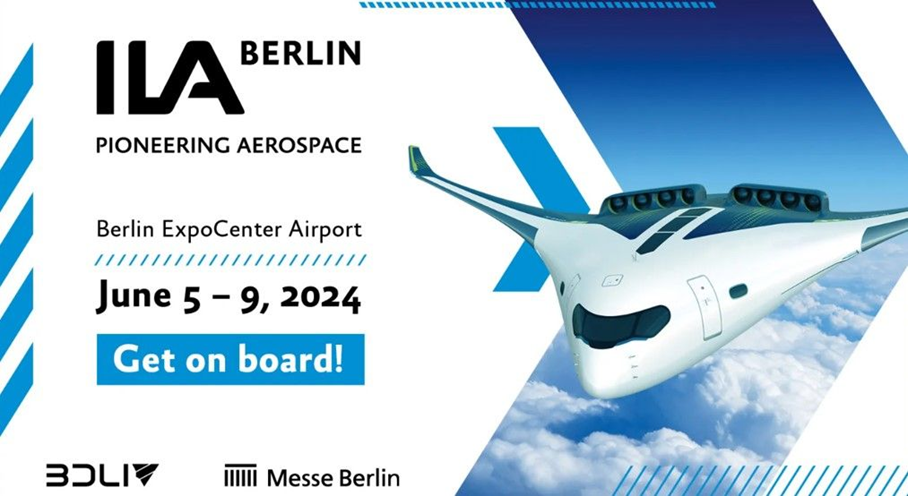Attending ILA Berlin: A Milestone for Nexus Technica Ltd.
We recently had the privilege of attending ILA Berlin, one of the most prestigious defense and aerospace fairs. This marked my first time attending such a formal and significant event. The fair set a high bar with its expectations for quality, durability, and cutting-edge technology, aligning perfectly with the values and expertise of Nexus Technica Ltd.
ILA Berlin provided an excellent platform to introduce Nexus Technica Ltd. to the defense and aerospace sectors within the EU market. The event enabled us to showcase our 20 years of experience in innovative production methods and our commitment to meeting the highest standards of quality and durability. Engaging with industry leaders and potential partners at ILA Berlin was invaluable. It allowed us to gain deeper insights into the specific needs and challenges faced by the defense and aerospace industries.
Our participation reaffirmed our dedication to delivering top-notch solutions that can help companies enhance their production capabilities and achieve their strategic objectives. The fair was a significant milestone for Nexus Technica Ltd., demonstrating our readiness to contribute to and thrive in the highly demanding and dynamic environment of the defense and aerospace sectors.
The use of aluminum and plastic in the aviation and defense industries is poised to continue evolving, driven by advancements in material science, engineering, and manufacturing technologies. Here's an analysis of the future prospects for these materials in these critical sectors:
Aluminum in Aviation and Defense
1. Lightweight and High-Strength Properties
- Aluminum alloys are favored for their excellent strength-to-weight ratio, which is crucial for improving fuel efficiency and payload capacity in aircraft and military vehicles. The development of new aluminum alloys with enhanced mechanical properties will continue to play a significant role in these industries.
2. Corrosion Resistance and Durability
- Advanced surface treatments and coatings are enhancing the corrosion resistance and durability of aluminum components, making them more suitable for harsh environments encountered in aviation and defense operations.
3. Structural Components
- Aluminum will remain a key material for structural components such as airframes, fuselages, and wing structures due to its ability to withstand high stress while maintaining a lightweight profile. Innovations in joining techniques, such as friction stir welding, are improving the integrity and performance of aluminum structures.
4. Thermal Management
- Aluminum's excellent thermal conductivity makes it an ideal material for heat exchangers and other thermal management applications in aerospace and defense systems.
5. Cost-Effectiveness and Recyclability
- The relatively low cost and high recyclability of aluminum make it an attractive option for both industries, aligning with sustainability goals and cost-efficiency requirements.
Plastics in Aviation and Defense
1. Lightweight and Versatile
- High-performance plastics and composites are increasingly used to reduce weight without compromising strength. This is particularly important for non-structural components such as interior panels, seats, and insulation materials.
2. Advanced Composites
- The use of carbon fiber reinforced plastics (CFRP) and other advanced composites is growing due to their exceptional strength-to-weight ratio, fatigue resistance, and flexibility in design. These materials are essential for creating lightweight, durable parts that can endure the demanding conditions of aviation and defense applications.
3. Impact Resistance and Safety
- Plastics offer superior impact resistance and energy absorption, which are critical for safety in both aviation and defense. They are used in applications such as cockpit canopies, ballistic panels, and protective gear.
4. Ease of Manufacturing and Integration
- Modern plastics can be easily molded into complex shapes, facilitating the integration of components and systems. Additive manufacturing (3D printing) is expanding the possibilities for producing customized plastic parts with intricate designs and functionalities.
5. Thermal and Acoustic Insulation
- Plastics with specialized formulations provide excellent thermal and acoustic insulation properties, improving the comfort and safety of aircraft and military vehicles.
Future Trends and Innovations
1. Hybrid Materials
- The combination of aluminum and plastics in hybrid materials and structures is a promising trend. For example, metal-plastic composites can leverage the strengths of both materials, resulting in parts that are both lightweight and strong.
2. Smart Materials
- The integration of smart materials, such as self-healing polymers and shape-memory alloys, is likely to enhance the performance and reliability of components used in aviation and defense.
3. Sustainability
- The drive towards more sustainable materials and processes will influence the selection and usage of both aluminum and plastics. Recyclable and environmentally friendly materials will become more prevalent.
4. Advanced Manufacturing Techniques
- Innovations in manufacturing techniques, including additive manufacturing and automated assembly, will allow for more efficient production of complex parts from both aluminum and plastics, reducing lead times and costs.
5. Enhanced Material Properties
- Ongoing research in material science will continue to enhance the properties of aluminum and plastics, making them more suitable for a broader range of applications within aviation and defense.
Both aluminum and plastics will continue to play crucial roles in the aviation and defense industries, driven by their unique advantages and ongoing advancements in technology. Aluminum's strength, durability, and lightweight properties will keep it indispensable for structural applications, while plastics' versatility, impact resistance, and manufacturability will see their increased use in both non-structural and advanced composite applications. The future will likely see a synergistic use of these materials, leveraging their combined strengths to meet the evolving demands of these high-performance industries.
Nexus Technica Ltd.

